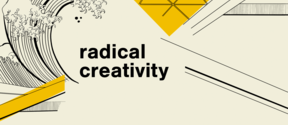Design Bits online course for non-designers (external link)
Become more creative problem-solver by learning how to learn through exploration and experimentation.

Design provides useful tools to structure complex problems, quickly make ideas concrete, and work across organisational boundaries. It focuses on how development makes things desirable, viable and feasible, and how sustainability perspectives are brought to the center of products and services.
Though Finland is recognised for its strong technological know-how, fewer people realise that Aalto University also ranks as a global leader in the field of design (#6 in the 2021 & 2022 QS rankings). Designing Change is a quick and readable cross-section of Aalto's world-class design research.
Design is a useful tool in any industry – for any organisation that wants to become more user-centric and learn to work more flexibly. Today, designers use systems thinking, empathy and foresight to increase an organisations' understanding of customers and its strategic readiness for change. They also make new perspectives and opportunities on change visible.
Professor Anna Valtonen, an experienced senior leader at both Nokia and Aalto University, edited the book together with Petra Nikkinen. More than 30 professors, university teachers and researchers present their latest thinking in design research through examples. The book is especially recommended for corporate management and decision-makers, as well as potential design students.
Big changes are also huge opportunities for organisations, and Designing Change focuses on the value of design in different contexts. For example, İdil Gaziulusoy writes about systemic changes that affect the future of societies as a whole. Alternative visions of future socio-technical and ecological systems can help to understand, motivate, and manage tense transitions.

Sampsa Hyysalo’s group has developed a co-visioning process that crosses organisational boundaries. The process has been successfully applied at the national, regional and municipal levels in the preparation of Finland's high-level strategies on energy transition, low-carbon transport and biodiversity.
Kirsi Niinimäki presents a practical example of building a systemic transformation: creating paths from fast fashion to a more sustainable textile and fashion business.
Taija Turunen explains how self-organising and multidisciplinary teams can offer benefits in rapidly changing environments that require creative problem solving. Tua Björklund analyses how design develops a company's ability to innovate even in uncertain and unstable conditions, where there is a need to start experimenting despite not yet knowing the target or desired outcome. Anna Valtonen's chapter highlights the ability of organisational foresight to not only broaden understanding but also help seize new ideas and opportunities instead of just adapting.
The book presents the wide scope of design research. Through its examples, the reader realises that there's more to design than just visuals, that it has a much broader scope. Design is most effective when combined with other expert knowledge, such as leadership, systems thinking, technology, chemistry, materials research, or medicine.

At the macro level, designers help model and visualise the different options and impacts of complex and multi-level systemic changes. On the other hand, designers also have an impact at the micro level, such as experiments by Julia Lohmann and Pirjo Kääriäinen on renewable biomaterials.
Finnish design expertise took big leaps when technology companies such as Nokia and Kone invested in design in the 1990s. More recently, investments in service design and strong customer focus have helped OP bank, telecommunications pioneer Elisa and Finnish broadcasting company Yle compete against international giants.
Finland is an exceptional country in terms of how widely design is adopted in the public sector. This has increased the customer orientation of our public administration and built collaboration between different actors. However, strategic design still has a lot of room to grow, both in companies of all sizes and in the public sector.
Aalto ARTS Books publishes the book Designing Change in Finnish on April 11, 2022 and in English on April 26, 2022. The physical books can be ordered from shop.aalto.fi. The book can be also downloaded for free in pdf format in the online store and from the Aaltodoc publication archive.
Additional information and interview requests:

Become more creative problem-solver by learning how to learn through exploration and experimentation.

Join us for our open lecture series discussing about the relevance of design in different contexts.

We enable experimental activities that challenge the status quo.



